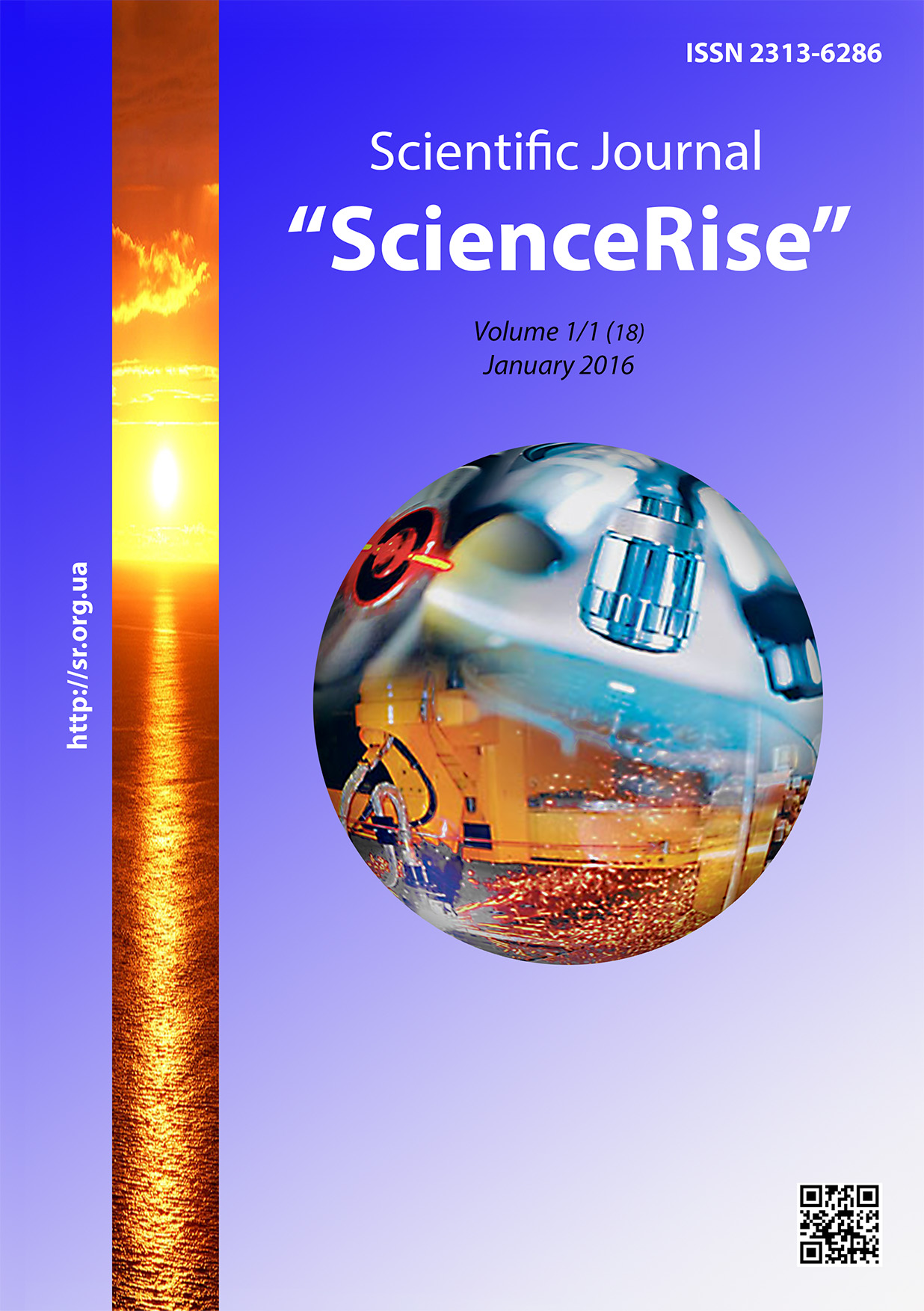The antagonistic properties of selenium-enriched probiotic strain Lactobacillus gasseri 55
DOI:
https://doi.org/10.15587/2313-8416.2016.58827Keywords:
probiotics, Lactobacillus gasseri, antagonistic activity, sodium seleniteAbstract
It was studied the antagonistic activity of probiotic strain Lactobacillus gasseri 55 grown on nutrient medium containing 8 mg/l of sodium selenite. It was established that the cultivation of the strain Lactobacillus gasseri 55 in an environment with selenium enhances its antagonistic effect on all the test strains opportunistic microorganisms than Salmonella enterica. It was discovered the synergy effect through antagonism sharing selenite and probiotic strain on Escherichia coli, Staphylococcus epidermidis and Pseudomonas aeruginosa
References
Piętka-Ottlik, M., Wójtowicz-Młochowska, H., Kołodziejczyk, K., Piasecki, E., Młochowski, J. (2008). New Organoselenium Compounds Active against Pathogenic Bacteria, Fungi and Viruses. Chemical & pharmaceutical bulletin, 56 (10), 1423–1427. doi: 10.1248/cpb.56.1423
Tran, P. L., Hammond, A. A., Mosley, T., Cortez, J., Gray, T., Colmer-Hamood, J. A. et. al (2009). Organoselenium Coating on Cellulose Inhibits the Formation of Biofilms by Pseudomonas aeruginosa and Staphylococcus aureus. Applied and Environmental Microbiology, 75 (11), 3586–3592. doi: 10.1128/aem.02683-08
Yang, J., Huang, K., Qin, S., Wu, X., Zhao, Z., Chen, F. (2008). Antibacterial Action of Selenium-Enriched Probiotics Against Pathogenic Escherichia coli. Digestive Diseases and Sciences, 54 (2), 246–254. doi: 10.1007/s10620-008-0361-4
Yazdi, M., Mahdavi, M., Setayesh, N., Esfandyar, M., Shahverdi, A. (2013). Selenium nanoparticle-enriched Lactobacillus brevis causes more efficient immune responses in vivo and reduces the liver metastasis in metastatic form of mouse breast cancer. DARU Journal of Pharmaceutical Sciences, 21 (1), 33. doi: 10.1186/2008-2231-21-33
Jamalifar, H., Rahimi, H., Samadi, N., Shahverdi, A., Sharifian, Z., Hosseini, F., Eslahi, H., Fazeli, M. (2011). Antimicrobial activity of different Lactobacillus species against multi-drug resistant clinical isolates of Pseudomonas aeruginosa, Iran. J. Microbiol., 3 (1), 21–25.
Mezaini, A., Chihib, N.-E., Dilmi Bouras, A., Nedjar-Arroume, N., Hornez, J. P. (2009). Antibacterial Activity of Some Lactic Acid Bacteria Isolated from an Algerian Dairy Product. Journal of Environmental and Public Health, 2009, 1–6. doi: 10.1155/2009/678495
Jarvis, W. R., Martone, W. J. (1992). Predominant pathogens in hospital infections. Journal of Antimicrobial Chemotherapy, 29, 19–24. doi: 10.1093/jac/29.suppl_a.19
Radhakrishna, P. M., Sharadamma, K. C., Vagdevi, H. M., Abhilekha, P. M., Rubeena, M. S., Nischal, K. (2010). Synthesis and Antibacterial Activity of Novel Organoselenium Compounds. International Journal of Chemistry, 2 (2). doi: 10.5539/ijc.v2n2p149
Khalid, A. Q., Al Johny, B. O., Wainwright, M. (2014). Antibacterial effects of of pure metals on clinically important bacteria growing in planktonic cultures and biofilms. African Jornal of Microbiology Research, 8 (10), 1080–1088. doi: 10.5897/ajmr2013.5893
Kheradmand, E., Rafii, F., Yazdi, M., Sepahi, A., Shahverdi, A., Oveisi, M. (2014). The antimicrobial effects of selenium nanoparticle-enriched probiotics and their fermented broth against Candida albicans. DARU Jornal of Farmaceuticals Science, 22 (1), 48. doi: 10.1186/2008-2231-22-48
Kovalenko, N. K., Ogirchuk, K. S., Poltavska, O. A., Povoroznyuk, V. V., Dzerovich, N. I. (2012). Microbiocenosis of intestine and nutrition of healthy and osteoporotic patients older women. Mikrobiol. Z., 74 (4), 57–63.
Kovalenko, N. K., Ogirchuk, K. S., Poltavska, O. A. (2013). Study of antagonistic properties of lactic acid bacteria isolated from women in normal and osteoporosis. Mikrobiol. Z., 75 (1), 21–27.
Collado, M. C., Hernandez, M., Sanz, Y. (2005). Production of bacteriocin-like inhibitory compounds by human fecal Bifidobacterium strains. J. Food Protect, 68 (5), 1034–1040.
Ohirchuk, K., Kovalenko, N., Samchuk, A., Ponomarenko, O. (2015). The effect of different concentrations of sodium selenite on the trace-element composition biomass of Lactobacillus acidophilus 55. Lviv, 201–202.
Tran, P. A., Webster, T. J. (2011). Selenium nanoparticles inhibit Staphylococcus aureus growth. International Journal of Nanomedicine, 1553. doi: 10.2147/ijn.s21729
Downloads
Published
Issue
Section
License
Copyright (c) 2016 Катерина Сергіївна Огірчук, Надія Костянтинівна Коваленко

This work is licensed under a Creative Commons Attribution 4.0 International License.
Our journal abides by the Creative Commons CC BY copyright rights and permissions for open access journals.
Authors, who are published in this journal, agree to the following conditions:
1. The authors reserve the right to authorship of the work and pass the first publication right of this work to the journal under the terms of a Creative Commons CC BY, which allows others to freely distribute the published research with the obligatory reference to the authors of the original work and the first publication of the work in this journal.
2. The authors have the right to conclude separate supplement agreements that relate to non-exclusive work distribution in the form in which it has been published by the journal (for example, to upload the work to the online storage of the journal or publish it as part of a monograph), provided that the reference to the first publication of the work in this journal is included.

